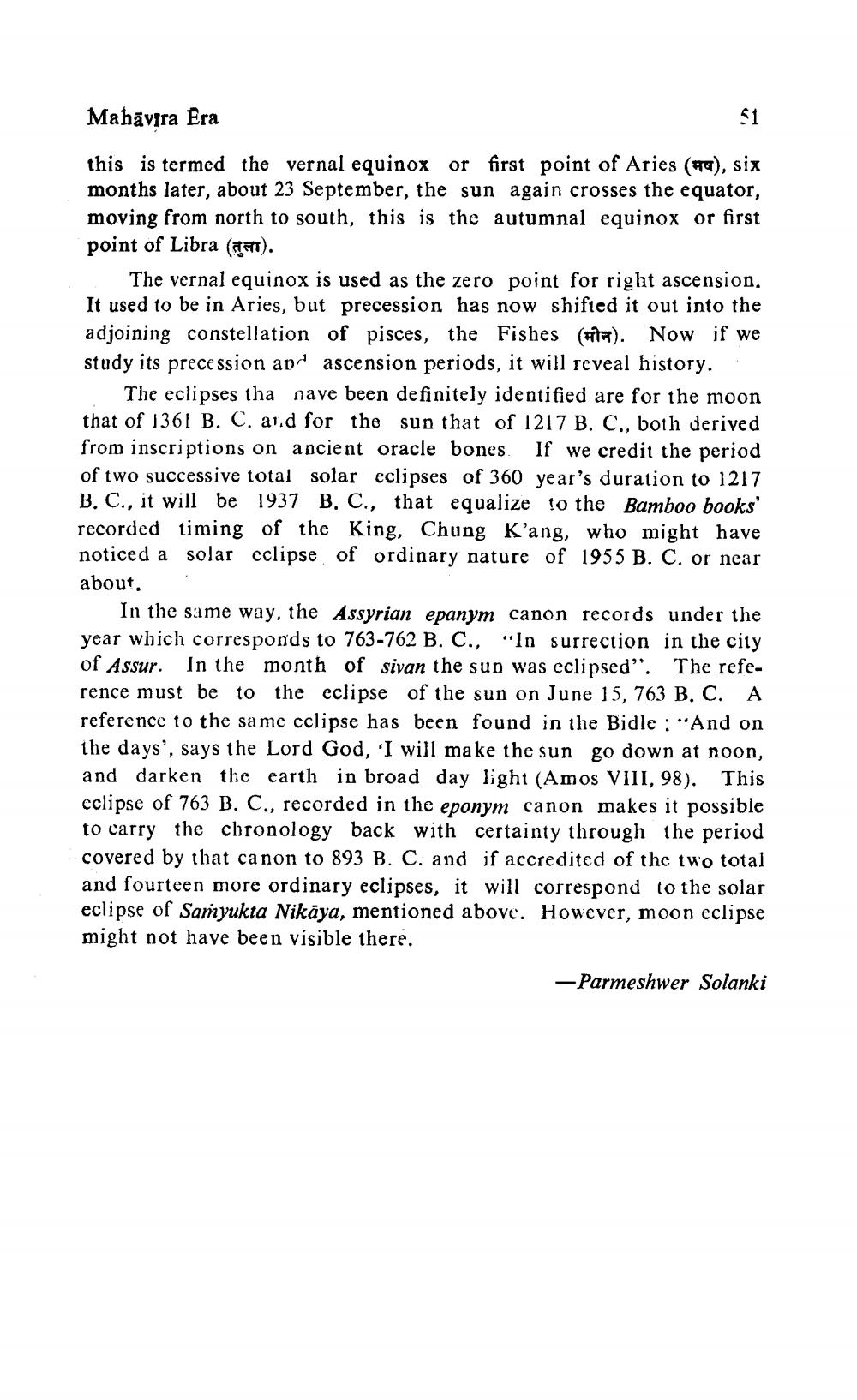________________
Mahāvīra Era this is termed the vernal equinox or first point of Aries (), six months later, about 23 September, the sun again crosses the equator, moving from north to south, this is the autumnal equinox or first point of Libra (at).
The vernal equinox is used as the zero point for right ascension. It used to be in Aries, but precession has now shifted it out into the adjoining constellation of pisces, the Fishes (site). Now if we study its precession ap ascension periods, it will reveal history.
The eclipses tha nave been definitely identified are for the moon that of 1361 B. C. and for the sun that of 1217 B. C., both derived from inscriptions on ancient oracle bones. If we credit the period of two successive total solar eclipses of 360 year's duration to 1217 B. C., it will be 1937 B. C., that equalize to the Bamboo books' recorded timing of the King, Chung K'ang, who might have noticed a solar cclipse of ordinary nature of 1955 B. C. or near about.
In the same way, the Assyrian epanym canon records under the year which corresponds to 763-762 B. C., “In surrection in the city of Assur. In the month of sivan the sun was eclipsed". The reference must be to the eclipse of the sun on June 15, 763 B. C. A reference to the same cclipse has been found in the Bidle : "And on the days', says the Lord God, 'I will make the sun go down at noon, and darken the earth in broad day light (Amos VIII, 98). This eclipse of 763 B. C., recorded in the eponym canon makes it possible to carry the chronology back with certainty through the period covered by that canon to 893 B. C. and if accredited of the two total and fourteen more ordinary eclipses, it will correspond to the solar eclipse of Samyukta Nikāya, mentioned above. However, moon eclipse might not have been visible there.
-Parmeshwer Solanki




